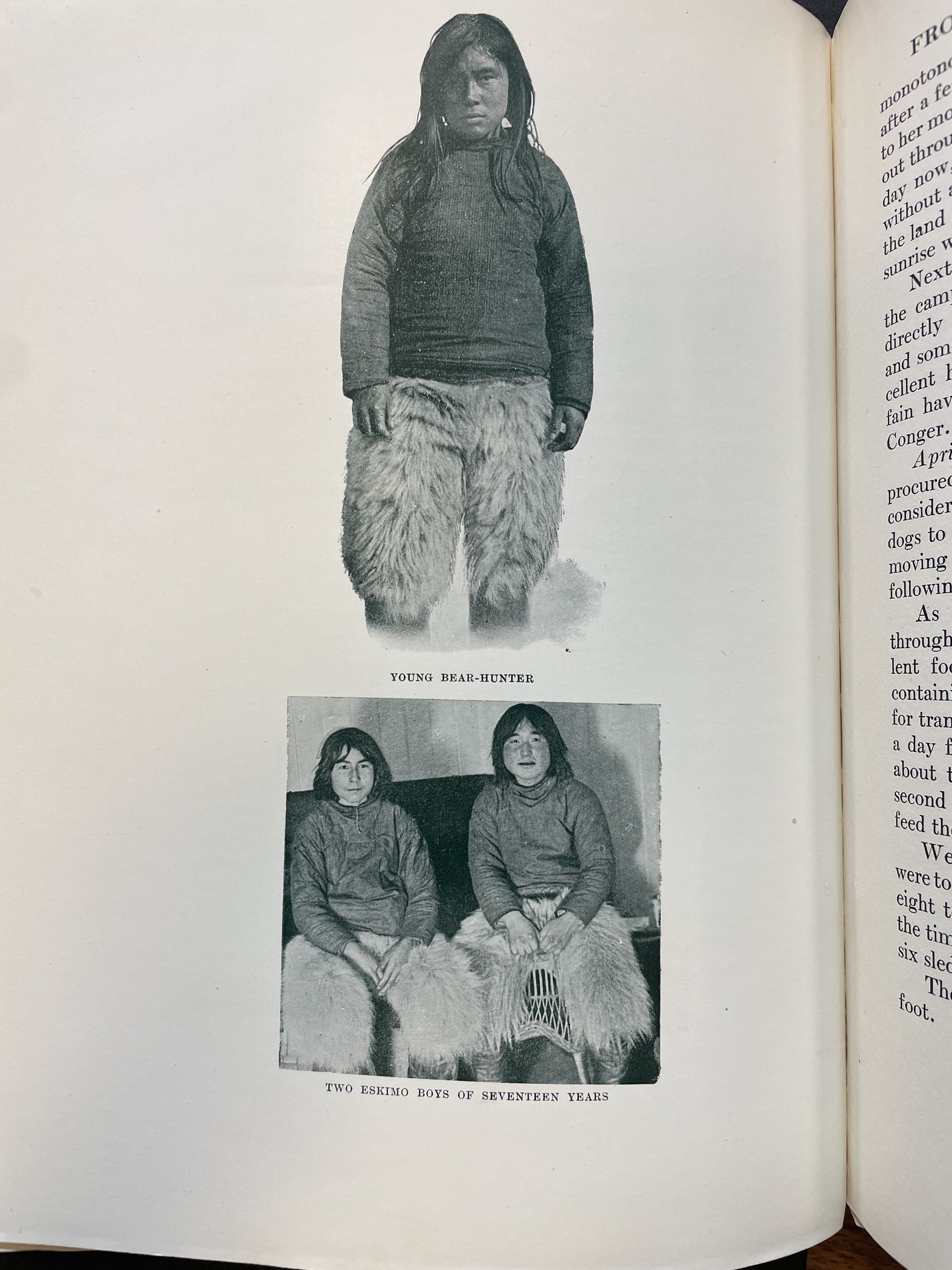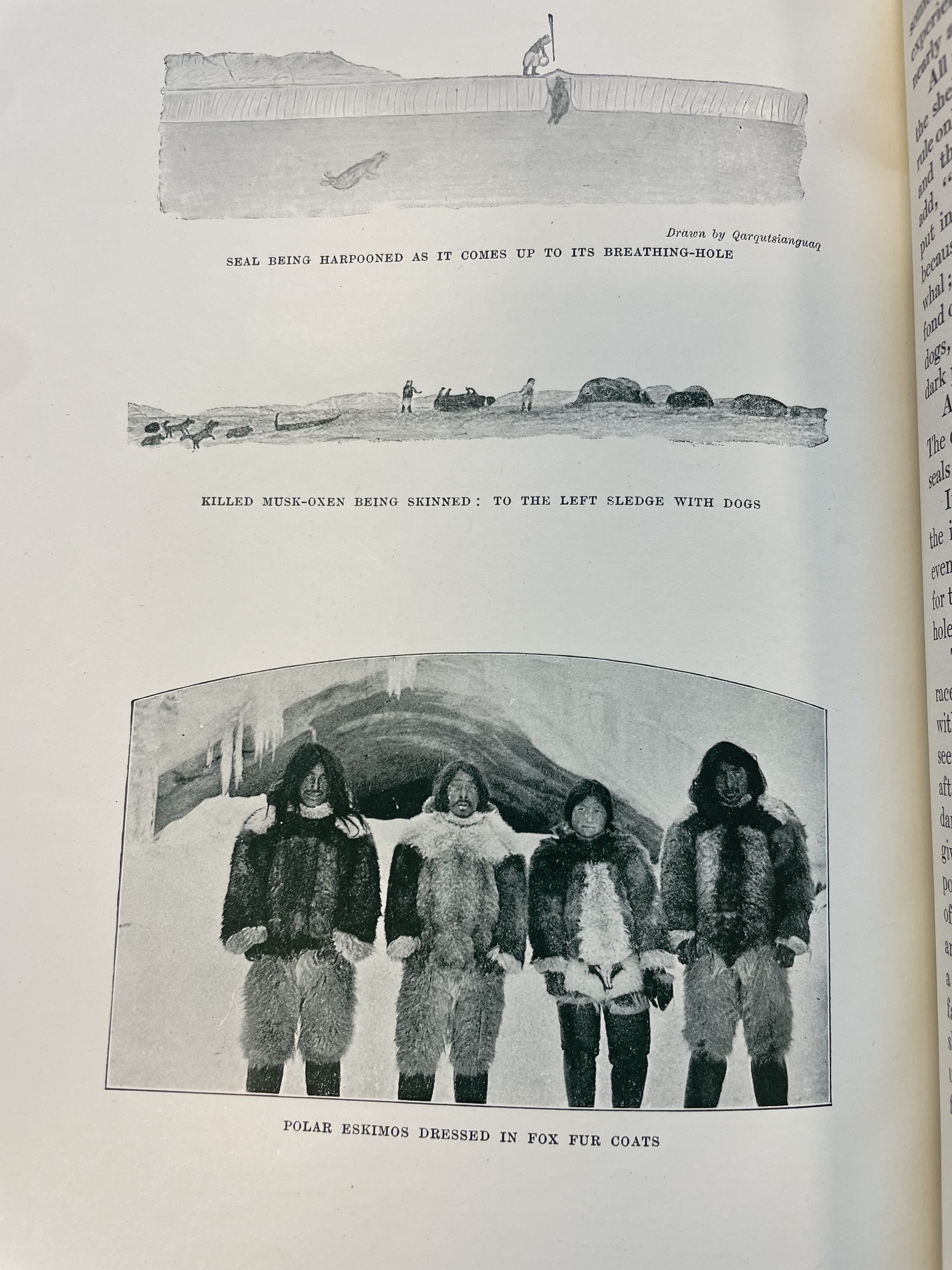Inuit Clothing
As seen in this photo, a young Inuit boy is depicted in traditional clothing prior to a bear hunt. While it is important to note that traditional clothing varied among Inuit groups, reflecting regional differences in climate, available resources, and cultural practices, the overall design of the clothing remained similar focusing on durability, warmth, and practical uses needed to survive in the harsh conditions of the Arctic. Starting with the use of animal skins and furs, Inuit communities relied on animals such as caribou, seals, polar bears, and foxes for their hides and furs. Additionally, parkas or Anorkas as essential garment for hunting, were typically made from caribou or seal skins which protected the hunter’s heads and faces from cold wind, while covering the entire body to maintain heat. These Anorkas were typically covered with intricate designs and patterns reflecting the strong cultural significance of individual and family identities. As seen in the photo, fur pants were also an essential aspect of protective clothing providing insulation and flexibility during hunting expeditions. Boots, known as kamik, were often made of seal skin or caribou hide were designed to be waterproof while maintaining insulation from extreme temperatures via the thick layers of animal hide used for the soles.
As seen in the photo, a group of men are shown in fox fur coats, which hold significant cultural and practical value. While there are many types of fur and hide used in traditional Inuit clothing, fox fur is known for its extreme durability and ability to maintain heat in the harsh Arctic conditions. The dense and plush nature of fox fur traps air to create a layer of insulation helping the wearer to maintain body heat. Fox fur coats are also as a symbol of cultural identity as they are crafted with traditional techniques passed down through generations. In addition to the practicality and cultural significance of the fox fur coat, they also played a crucial role on the economic front as a valuable commodity in the fur trades of the 19th and 20th centuries. Furs were sought out by wealthy Europeans as a status symbol, particularly the white Arctic fox fur. Reflecting on the economic value and the commoditization of traditional clothing, it is important to note the deeply rooted cultural significance and value placed on fox furs as a tool for survival rooted in sustainable hunting practices and respect for the Arctic environment.


